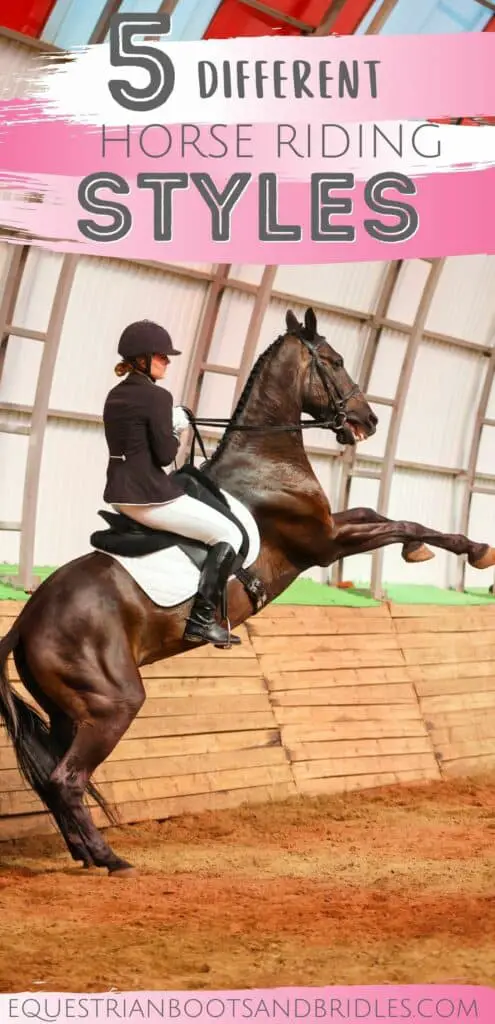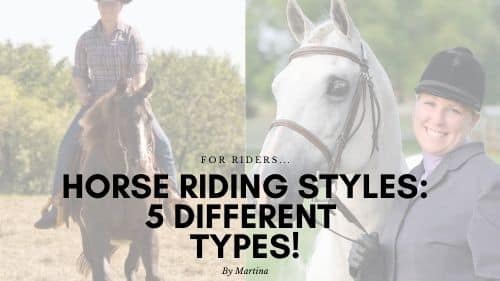Before we get into the 5 main types of horse riding styles, lets do a brief introduction into English and Western horse riding styles.
English & Western Horse Riding Styles

Western and English are the most common of horse riding styles. Both require the same amount of effort, however both differ in:
- equipment,
- type of horse,
- gait,
- attire.
Equipment used in Western riding originated from working cattle from horse back. When roping cattle, the horn was used to anchor the lariat.
Equipment used in English riding originated from that of the European Military. The saddle is lighter, and smaller. Riders wanted a seat which would interfere the least with the horses movements.
Horses used for Western riding provide steadiness, with the ability to herd cattle. Horses used for English riding provide speed, with the ability to jump over obstacles need be.
Gaits between the two rides are labeled differently. Walking is similar in both English and Western riding. Trotting is much faster in Western riding than in English riding. Cantering is much faster with variations of paces in English riding versus a slow consistent canter in Western riding.
Picture a cowboy, that is the attire of a Western rider. As for an English rider, hunting caps or helmets are more common.
Now that you are familiar with the main differences between the two most common riding styles, lets dive a little deeper!
Dressage
Think of dressage as a beautiful dance. Both rider and horse are in sync with their movements, and with what looks like minimal efforts. However, some would argue this as being the most involved of sports.
The horse has to learn a discipline set of movements marked by triggering certain cues.
It is a very technical sport, one which requires the smartest of horses and best of trainers!
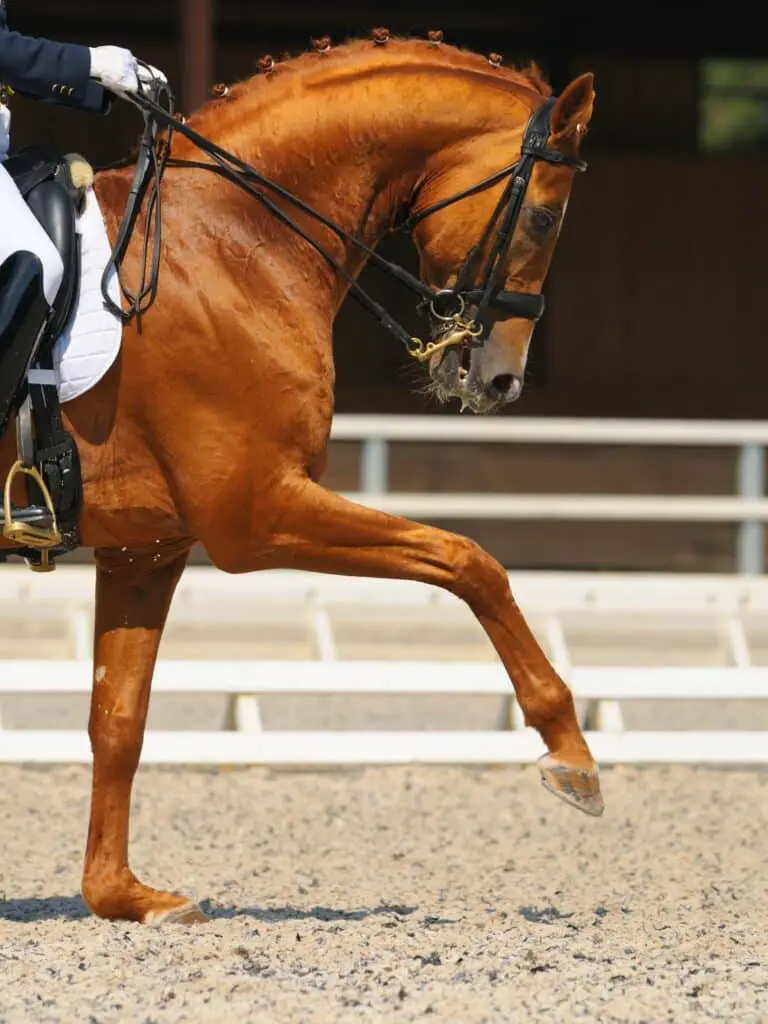
Flat Racing
Flat racing is a type of horse race that is on a level course without obstacles.
Flat racing tests speed, stamina, and rider ability.
Races are held over a variety of distances based on sex, age, and ability of the horse. The Thoroughbred horse is most used in horse races.
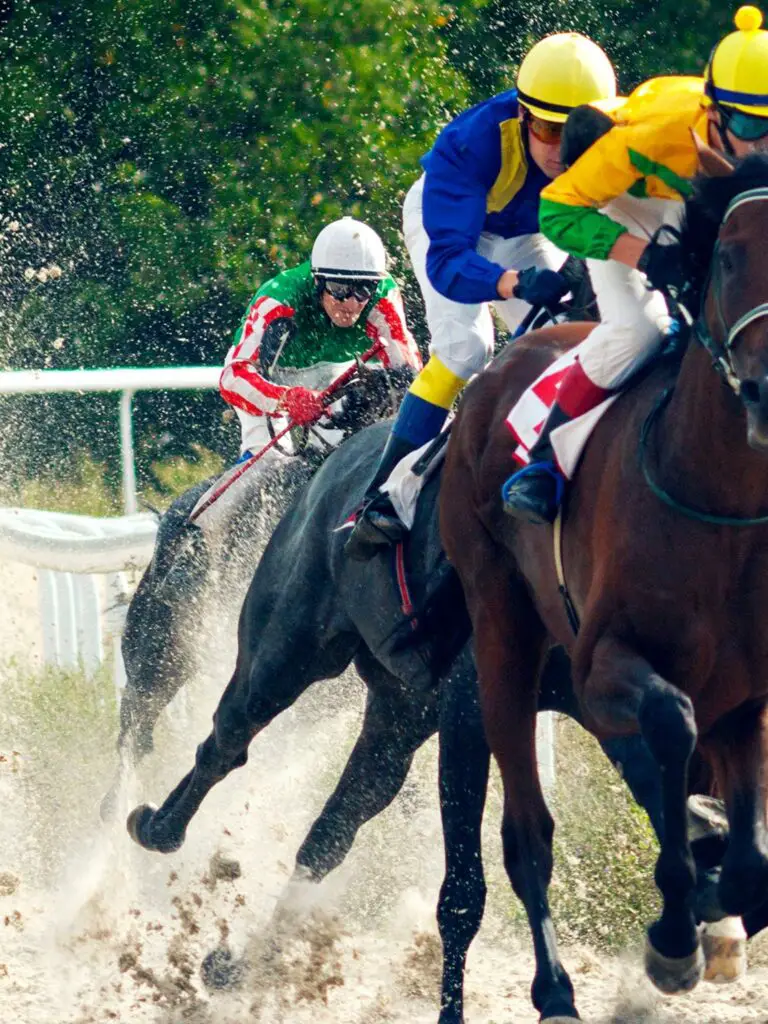
Showjumping
Jumping is one of the most popular international equestrian sports and whether you’re entering it at a grassroots level, or competing in hunter jumping events.
Show jumping is divided into 3 different classes: hunter, jumper, and hunt seat equitation.
Hunters are judged by how closely they meet an ideal standard of manners and style. Jumpers are scored objectively in a timed trial with faults for failing to clear an obstacle. Hunt seat jumping judges the rider’s ability on flat ground as well as over fences.
Horses must jump over many obstacles of different heights. Most of the time they will jump horizontal beams which link to two wooden sides or cups.
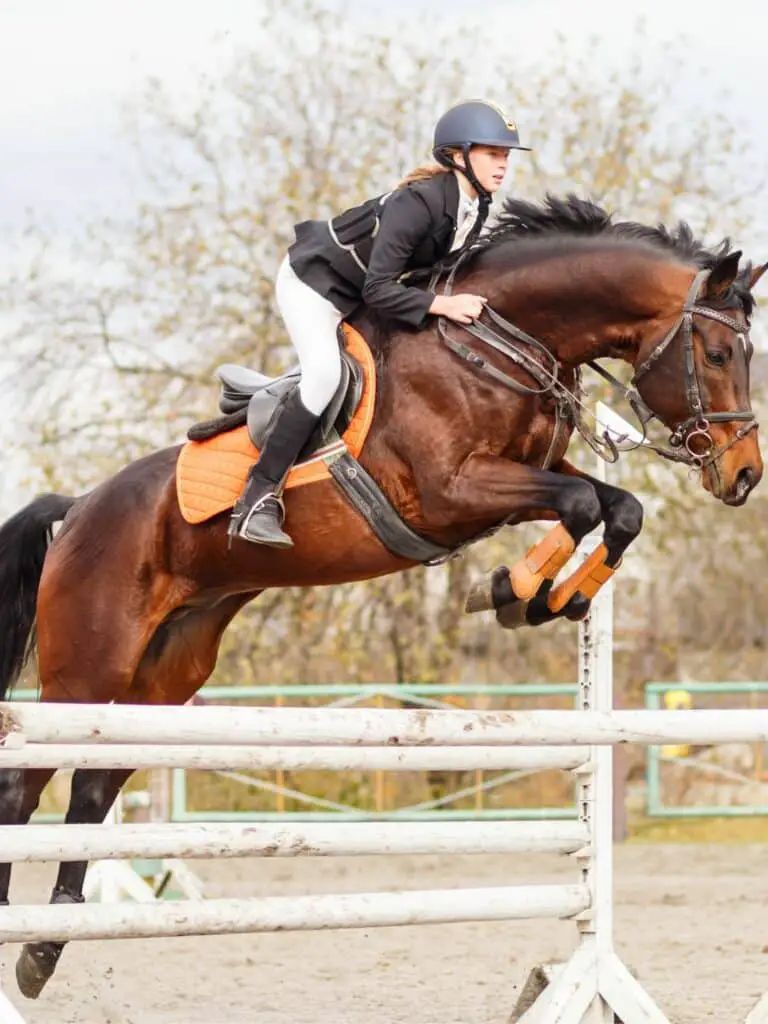
Polo
Polo is a human interacted sport played on horseback, and one of the worlds oldest team sports!
Polo has been called the “Sport of Kings” and has become a popular spectator sport.
Polo, game played on horseback between two teams of four players each who use mallets with long, flexible handles to drive a wooden ball down a grass field and between two goal posts.

Rodeo Events
The general term Rodeo consists of different Western horse riding styles.
The different Western horse riding styles being; tie-down roping, team roping, steer wrestling, saddle bronc riding, bareback bronc riding, bull riding and barrel racing.
The competitions are judged, and or timed.
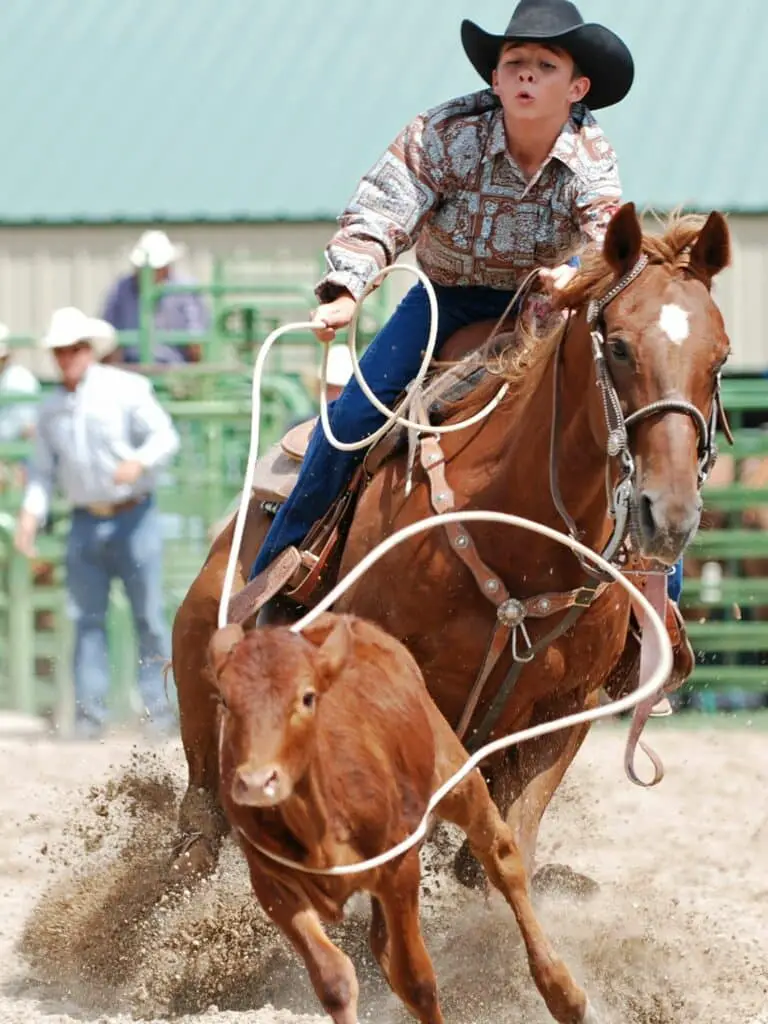
I hope this post gives you a better idea of ways to enjoy your ride, or potentially train for a future one! If so, have a read on our post on the best suited training methods for your chosen ride!
I would love to hear your feedback, drop a comment below!
Happy Riding!
Martina
Enjoyed this read? Try pinning it!
